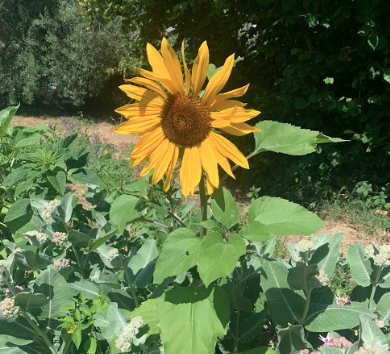
Companion Planting
Summary:
In this lesson, students explore the agricultural method of companion planting, a method developed and still used by Indigenous farmers around the world. In this lesson, students will engage with a text about the “Three Sisters” method of planting beans, corn, and squash together. Then students will reflect on how they might utilize the method of companion planting in their own planting proposal. We suggest taking time with your class to acknowledge the Indigenous lands your program is situated on. In the “Reference” section of this lesson, you will find a list of resources for creating land acknowledgments and resources for discussing settler colonialism.
Materials & Prep:
- Device to read/watch the texts
- Something to write with
- Chart paper (optional)
Download Lesson Plan
References
- Jigsaw: Developing Community and Disseminating Knowledge (n.d). Facing History. Retrieved from https://www.facinghistory.org/resource-library/teaching-strategies/jigsa... community-and-disseminating-knowledge.
Resources
- Native Land Digital provides a searchable database for Territory acknowledgement as well as provides resources for learning more about land acknowledgments.
-
Starting from the Heart: Going Beyond Land Acknowledgement. The Elementary Teachers’ Federation of Ontario (ETFO) have put together a curriculum that engages teachers with creating land acknowledgements and lessons to do with your students.
-
This resource compiled by the Native Governance Center provides important considerations when doing land acknowledgments.
- Learning for Justice’s article, What Is Settler-Colonialism? Includes resources for discussing settler-colonialism.
Disclaimer: All videos, references and resources are used for educational purposes only. The Edible Schoolyard Project does not endorse any brands, labels, organizations, or businesses included in videos, references, or resources.
Teaching Notes:
- This lesson is a text-heavy lesson and asks students to complete a close reading. We recommend that you print the reading for students and assign the reading in small groups first. Then have students share out in the larger group.
- The “READ” section of this lesson may feel a little dense to some students without the proper support. We suggest the following strategies for supporting students to engage fully with the text:
- Instruct students to find a quiet place to sit and encourage them to observe their surroundings before and after they read. This helps them engage with their surroundings in a different way and can also support their engagement with the text.
- Assign sections of the reading as a jigsaw: Assign small groups a different topic each, and then have groups report back to one another after they have finished reading with their topic in mind.
- Remind students that the Talk to the Text or T4 strategy can be used when reading texts to help track their thoughts, questions, and reactions to a text. In these strategies, students write notes and ask questions in the margins, underline words, and use symbols to react to the text.
- Read the article aloud and have students take notes as they listen. It might be helpful to stop frequently as you read to write down keywords, phrases, or ideas on chart paper. Take your time through the reading and ask your students their thoughts along the way.
- This lesson is primary text based. Check out the lesson, Making Sense of What You Read for additional suggestions for textual analysis.
- The “REFLECT” section of this lesson can serve as guiding questions for an open discussion in the garden. Consider expanding on these questions and having students do a Think, Pair, Share.
- The “OPTIONAL” section of this lesson offers some great ways to integrate research and analysis into the lesson.
- You may notice that the term “Indigenous” is capitalized throughout this and other lessons in the curriculum. Learn more about our decision to use “Indigenous” instead of “indigenous” here.
- At some point during this lesson, have students return to the garden bed in which they are conducting the plant start investigation (Lesson 3). They should record their observations about the plants and soil on the Plant Start Investigation worksheet.




